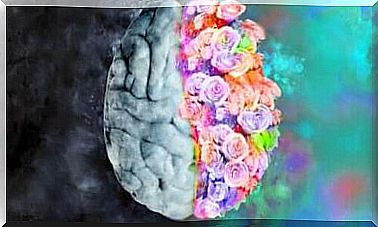Stendhal Syndrome

If you are an art lover and are impressed by a beautiful work or shiver when entering a prestigious museum, congratulations! It’s totally normal. However, there are certain extremely sensitive people who, in these situations, manifest the symptoms of Stendhal syndrome, or also known as Florence syndrome, traveler stress or museum illness.
This peculiar syndrome is triggered by the observation of works of great beauty. The story of their discovery, in addition to being casual, is very curious, almost as much as the phenomenon itself. We invite you to meet her!
Its origin: the art of Florence
In 1817, Henri-Marie Beyle, a famous and prestigious French writer, was touring Italy to gather information for his next book. Guess the pseudonym of this author? Stendhal!
During his visit to Florence, he toured every corner of the city. He was impressed by the art that emanated from every pore of its streets: museums, churches, domes, landscapes, roofs, sculptures, facades, frescoes… Beyle wanted to enjoy the whole city.
When he was visiting the Basilica of Santa Cruz, his perplexity, ecstasy, and enthusiasm triggered a series of physical discomforts. Above all, cold sweats and a feeling of deep anguish. His heart sped up and he began to feel dizzy. He had to sit down and rest immediately, and once calm, he reflected.

As he later recounted in his book Naples and Florence: A Journey from Milan to Reggio , his own experience provided psychology and medicine with valuable information, which he argued in the following terms:
His crucial and detailed description of the phenomenon made it later known as Stendhal’s syndrome, in honor of the discovery of its symptomatology.
Symptoms of Stendhal’s Syndrome
It wasn’t until a century later that it was first regarded as a syndrome. In 1979, Italian psychiatrist Graziella Magherini investigated and studied a hundred similar cases of tourists in Florence. She noted that the set of symptoms they had could be summed up in a nice metaphor: a kind of “artistic excess”.
This symptomatology involved tachycardia, sweating, palpitations, hot flashes, tremors, emotional tension and exhaustion. In more severe cases, dizziness that resulted in dizziness or even depression.
Some consider Stendhal’s syndrome to be a psychosomatic illness due to the bidirectional relationship between mind and body. In that case, emotional excitement would cause the physical symptoms described above. Others classify it as a psychic situation. Thus, in addition to being punctual, its origin is attributed to the observation of great beauty in a short period of time. In this way, Stendhal’s syndrome would be like an artistic shock.
Who can develop Stendhal’s syndrome?
Anyone can suffer the symptoms. We can all feel exhausted, dizzy or even feel our pulse rate increase at any given time. Furthermore, this moment may or may not coincide with what we are admiring a work of great beauty. It is therefore a very unusual syndrome.
It usually happens to tourists and visitors to cities who are very sensitive to art and whose main reason for the trip is their admiration. It usually starts in places that captivate and that, for some reason, have a very intense emotional meaning to them.
Controversy: Myth or Reality?
Over the last few decades, Stendhal’s syndrome has become a reference for the reaction of individuals when exposed to works of art. In particular, when they are especially beautiful or are displayed in large numbers in one place. But, like almost everything else, it is not without controversy.
There is no doubt that when we hear a song that brings us precious memories, we cannot help but be thrilled. Nor that we get goosebumps when we go to a play. Something moves us inside. Art is emotion.
Despite being recognized by most clinical psychologists, others question, question and consider it a simple myth. The latter believe that Stendhal’s syndrome is pure suggestion, that is, it is only in the mind. On the other hand, the most skeptical believe that the unconscious of the city’s visitors deceives them. Your suggestion causes them to experience different symptoms.

Financial motivation?
Florence was the birthplace of the Renaissance and remains one of the most beautiful cities with the greatest artistic history. Therefore, the scientific community is concerned about the possible financial interests that may be behind this phenomenon, such as the intention to attract more visitors, increase revenue or increase the reputation of its beauty.
And you, what do you think? Is it just a way to catch the attention of new tourists or perhaps enjoying artwork for short periods of time can cause these physical changes?









